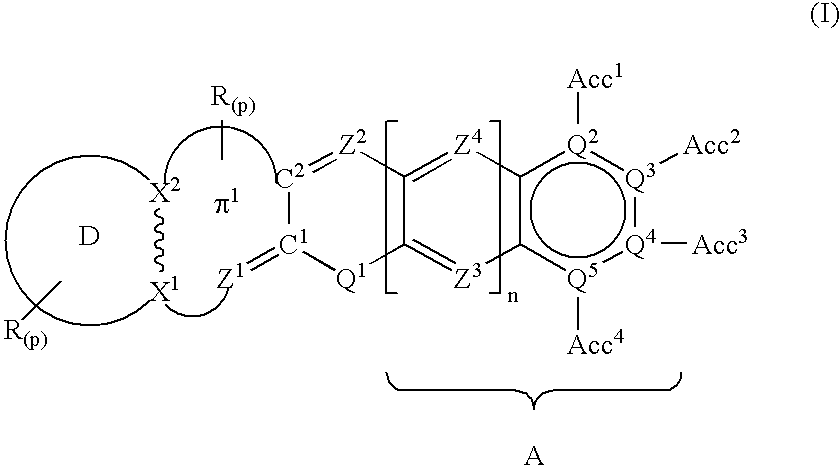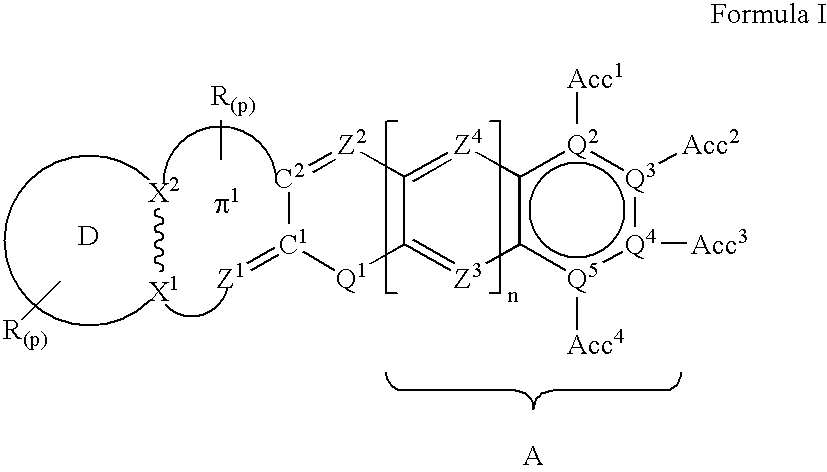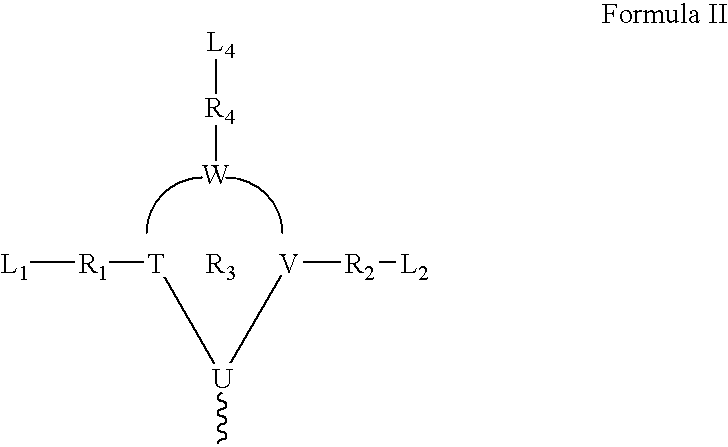Heterocyclical Chromophore Architectures with Novel Electronic Acceptor Systems
a technology of electronic acceptors and heterocyclic chromophores, applied in the field of heterocyclical chromophore architectures with novel electronic acceptor systems, can solve the problems of limited production of high material hyperpolarizabilities (xsup>(2)/sup>), and the formation of multi-molecular dipolarly-bound (centrosymmetric) aggregates of molecules that cannot be dismantled via realistic field energies
- Summary
- Abstract
- Description
- Claims
- Application Information
AI Technical Summary
Benefits of technology
Problems solved by technology
Method used
Image
Examples
Embodiment Construction
[0059] The compounds of Formula I are useful structures for the production of NLO effects.
[0060] Many useful NLO chromophores are known to those of ordinary skill in the art. While any NLO chromophore that provides the desired NLO effect to the NLO polymer and is compatible with the synthetic methods used to form the NLO polymer may be used, preferred NLO chromophores include an electron donating group and an electron withdrawing group.
[0061] The first-order hyperpolarizability (β) is one of the most common and useful NLO properties. Higher-order hyperpolarizabilities are useful in other applications such as all-optical (light-switching-light) applications. To determine if a material, such as a compound or polymer, includes a nonlinear optic chromophore with first-order hyperpolar character, the following test may be performed. First, the material in the form of a thin film is placed in an electric field to align the dipoles. This may be performed by sandwiching a film of the mate...
PUM
| Property | Measurement | Unit |
|---|---|---|
| length | aaaaa | aaaaa |
| polarizabilities | aaaaa | aaaaa |
| second-order polarizability | aaaaa | aaaaa |
Abstract
Description
Claims
Application Information
 Login to View More
Login to View More - R&D
- Intellectual Property
- Life Sciences
- Materials
- Tech Scout
- Unparalleled Data Quality
- Higher Quality Content
- 60% Fewer Hallucinations
Browse by: Latest US Patents, China's latest patents, Technical Efficacy Thesaurus, Application Domain, Technology Topic, Popular Technical Reports.
© 2025 PatSnap. All rights reserved.Legal|Privacy policy|Modern Slavery Act Transparency Statement|Sitemap|About US| Contact US: help@patsnap.com



